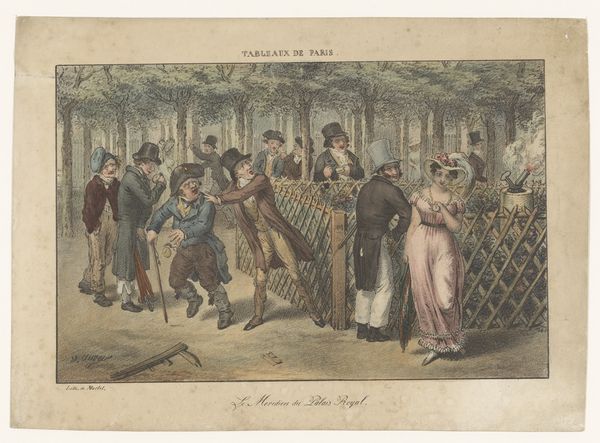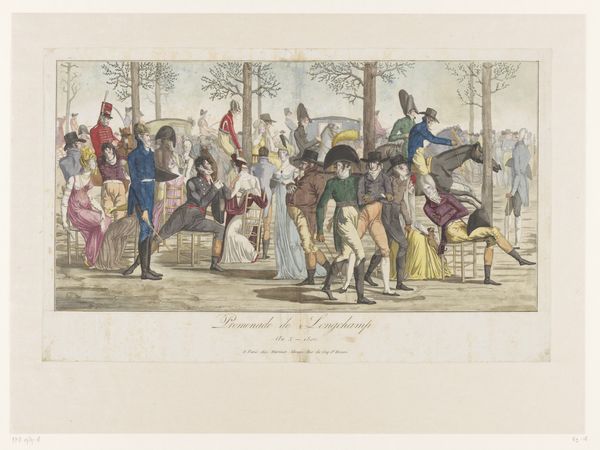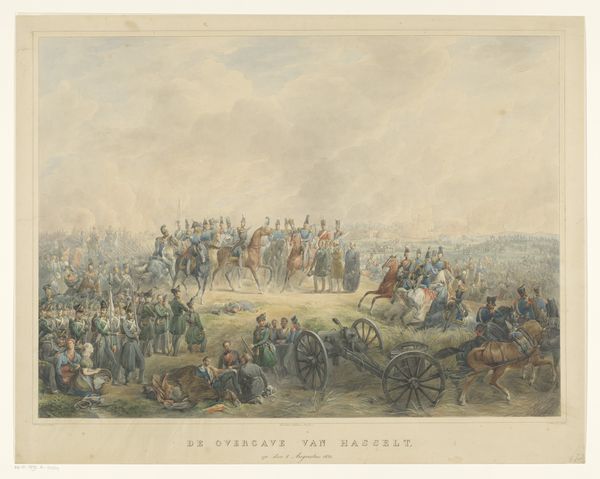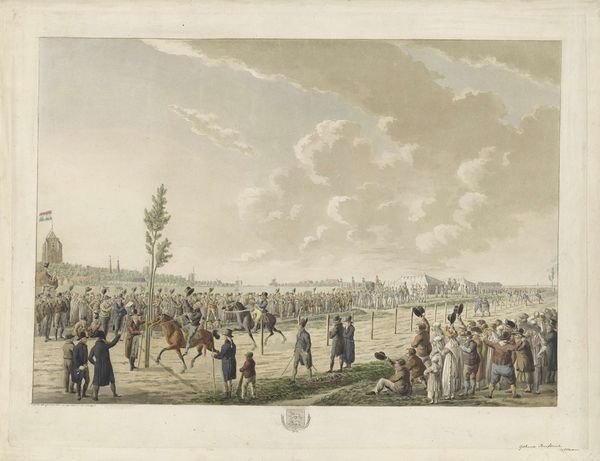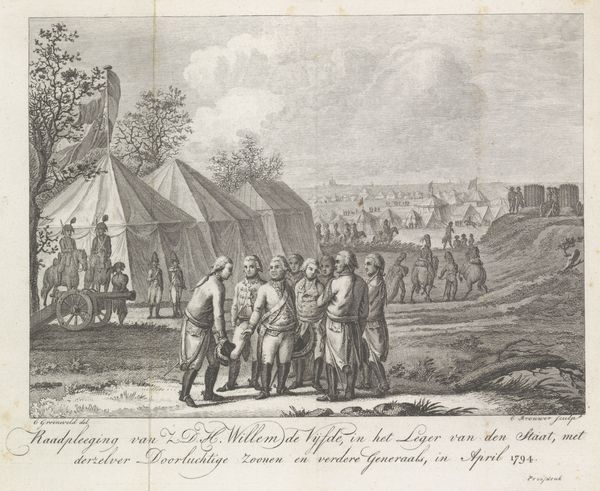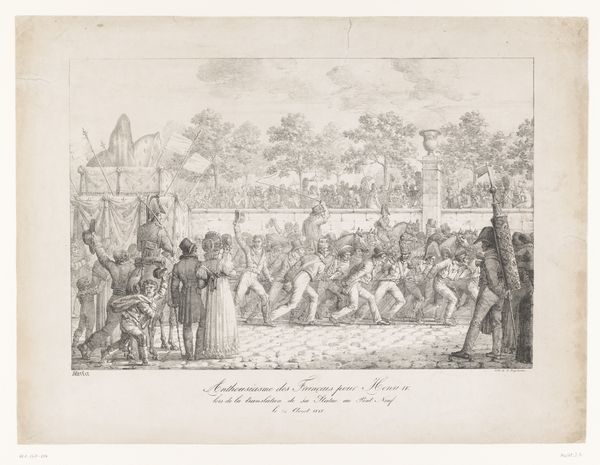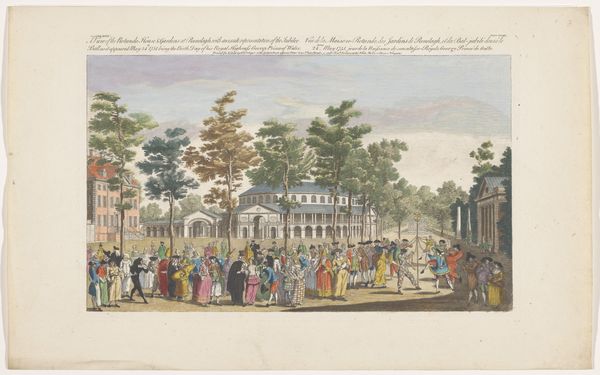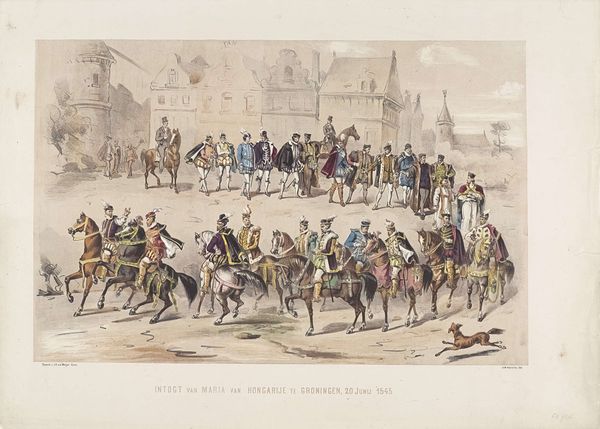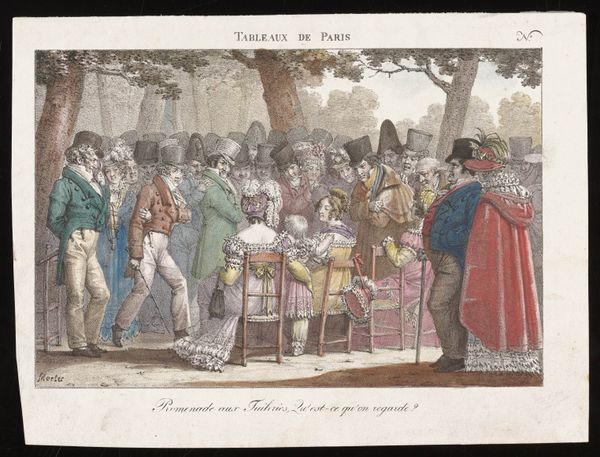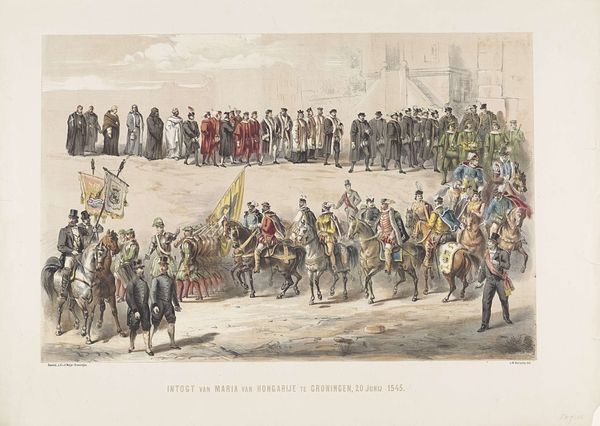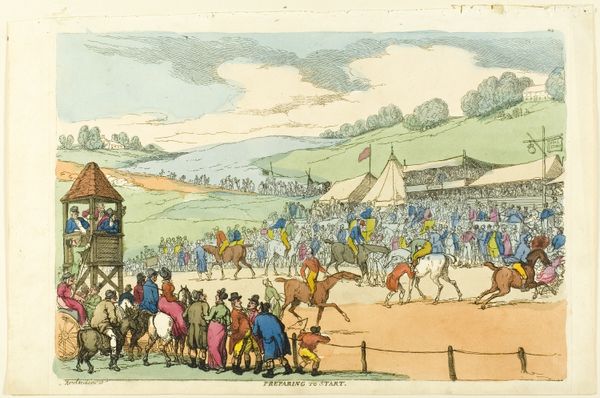
drawing, coloured-pencil, print
#
portrait
#
drawing
#
coloured-pencil
# print
#
landscape
#
coloured pencil
#
genre-painting
#
watercolor
#
realism
Dimensions: height 149 mm, width 234 mm
Copyright: Rijks Museum: Open Domain
Curator: What a delightful slice of 19th-century life! This is "Prijsuitreiking," or "Award Ceremony," created by Willem Pieter Hoevenaar around 1829. It’s a genre scene rendered with coloured pencils, exhibiting a strong commitment to realism. What strikes you initially? Editor: It feels so meticulously observed. A snapshot, almost. But it is predominantly pale and rather demure: all of these expectant people in their muted finery clustered together awaiting a… horse race? Curator: Precisely. This artwork captures a moment steeped in societal ritual, specifically the awards presentation following a horse race. If you look carefully, you see that we're observing the social distinctions carefully enforced in such events. Editor: Oh, you mean like, who gets to be in the stands versus on the ground? Who’s got the fancier frock? The flag is in the stands, of course... it's almost an apartheid of taste. I’m instantly drawn to questioning the dynamics between classes during such "festivities." Curator: Your point speaks to the power of art in reflecting these socio-economic structures. Notice, too, how the institution—here, the event and its attendant organizers, even the tent—become characters themselves in this drama. Think about how these carefully managed public events shaped collective identity, reinforcing a sense of national pride… or exclusion. Editor: Indeed, this seemingly innocent award ceremony might function, on a deeper level, as a form of social control. Even the medium is loaded: a detailed drawing such as this caters to a particular, literate, audience with leisure time to examine and ponder its minute details. I imagine the print medium was selected so that the artist's intent and the values encoded could circulate. Curator: I find your analysis quite pertinent, underlining how such a depiction functions not only as record-keeping but as an active participant in the social narrative of the time. How does the print medium broaden our insights in terms of accessibility and reception? Editor: To imagine it circulating, adorning the walls of parlors, fueling conversations… the implications are immense. We’re no longer simply spectators to history but, through Hoevenaar’s perspective and print culture, are implicated in the very mechanisms of its transmission. It asks us to consider our own position as interpreters of history, wouldn't you say? Curator: I concur wholeheartedly. Analyzing artwork like "Award Ceremony," is vital for gaining nuanced perspectives into social constructs that endure into our contemporary era.
Comments
No comments
Be the first to comment and join the conversation on the ultimate creative platform.
